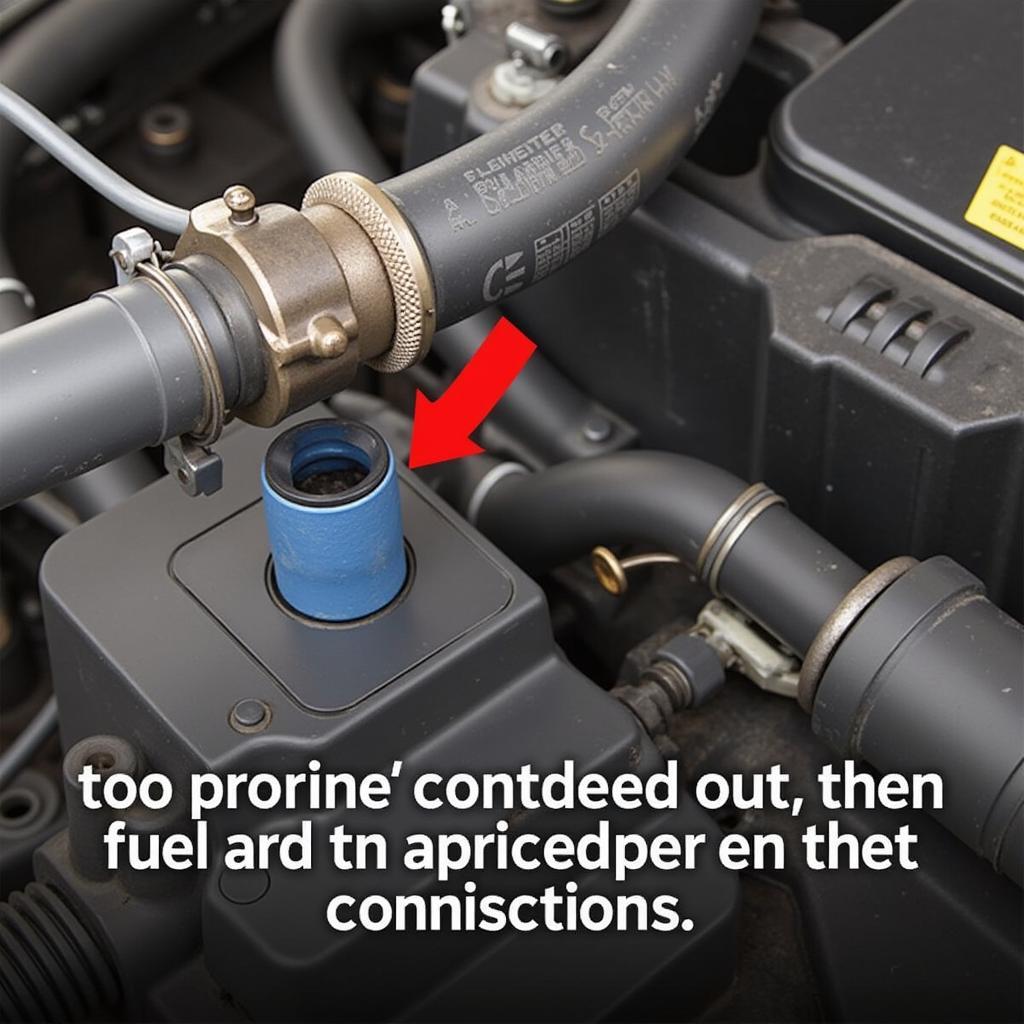Maintaining your car’s fuel system is crucial for optimal performance and safety. While often overlooked, detailing your metal gasoline line can prevent rust, leaks, and other potential issues. This guide will provide a comprehensive walkthrough on how to detail a metal gasoline line in your car, ensuring a clean and efficient fuel delivery system.
Understanding Your Car’s Fuel Line
Before diving into the detailing process, it’s essential to understand the function and location of your car’s fuel lines. The fuel line transports gasoline from the tank to the engine, a critical component that requires careful attention. Metal fuel lines are more durable than rubber hoses and are typically found in older vehicles. Knowing the type of fuel line you have is the first step in proper maintenance. Is it steel, aluminum, or another type of metal? This will influence your cleaning product choices.
Gathering Your Supplies
Having the right tools and supplies will make the detailing process smoother and more effective. Here’s what you’ll need:
- Safety glasses and gloves
- Jack and jack stands
- Wrenches (various sizes)
- Fuel line disconnect tool
- Rust remover (suitable for your fuel line material)
- Metal polish
- Clean rags or microfiber cloths
- Fuel line sealant (if needed)
- Drip pan
Preparing Your Car
Safety first! Disconnect the negative battery cable to prevent any electrical hazards. Next, locate the metal gasoline line, typically running underneath the vehicle. You might need to consult your car’s manual or an online resource for specific instructions. Securely lift your vehicle with the jack and place jack stands for added stability. Place the drip pan underneath the fuel line to catch any spills. This will protect your driveway and the environment.
Disconnecting the Fuel Line
Using the fuel line disconnect tool, carefully detach the fuel line from the fuel pump and the engine. Be prepared for some residual fuel to leak out, hence the drip pan. Remember, gasoline is flammable, so work in a well-ventilated area away from any open flames. This step requires patience and precision, so avoid rushing.
Cleaning the Metal Gasoline Line
With the fuel line disconnected, you can begin the cleaning process. Apply the rust remover to the affected areas, following the manufacturer’s instructions. Allow it to sit for the recommended time to effectively loosen the rust. Once the rust has loosened, use a wire brush or steel wool to gently scrub the line. For stubborn rust, repeat the process as needed. After removing the rust, apply metal polish to restore shine and protect the line from future corrosion.
Inspecting and Reconnecting
Once clean, thoroughly inspect the fuel line for any signs of damage, such as cracks or leaks. If you find any damage, consult a professional mechanic for repair or replacement. If the fuel line is in good condition, carefully reconnect it to the fuel pump and the engine, ensuring a tight and secure fit. Apply fuel line sealant to the connections to prevent leaks.
 Reconnecting Car Fuel Line and Applying Sealant
Reconnecting Car Fuel Line and Applying Sealant
Final Checks and Clean Up
Reconnect the negative battery cable and lower your vehicle. Start the engine and check for any leaks around the fuel line connections. If you detect any leaks, immediately turn off the engine and address the issue. Dispose of used rags and cleaning materials properly. Congratulations, you’ve successfully detailed your metal gasoline line!
Conclusion
Detailing your metal gasoline line might seem like a daunting task, but by following these steps, you can maintain a clean and efficient fuel system, preventing potential issues down the road. Regular maintenance like this contributes to the longevity and performance of your vehicle. Remember, a well-maintained car is a happy car!
FAQs
- How often should I detail my metal gasoline line?
- Can I use any type of rust remover on my fuel line?
- What should I do if I find a leak after reconnecting the fuel line?
- Is it necessary to disconnect the battery before working on the fuel line?
- Can I detail the fuel line without lifting the car?
- What are the signs of a damaged fuel line?
- How do I dispose of used fuel line cleaning materials?
For further information on car maintenance, explore our detailed guide on can am cars in detail book. This resource provides valuable insights into various aspects of car care.
Need additional assistance? Contact us via WhatsApp: +1(641)206-8880 or Email: [email protected]. Our 24/7 customer support team is ready to help.

Leave a Reply